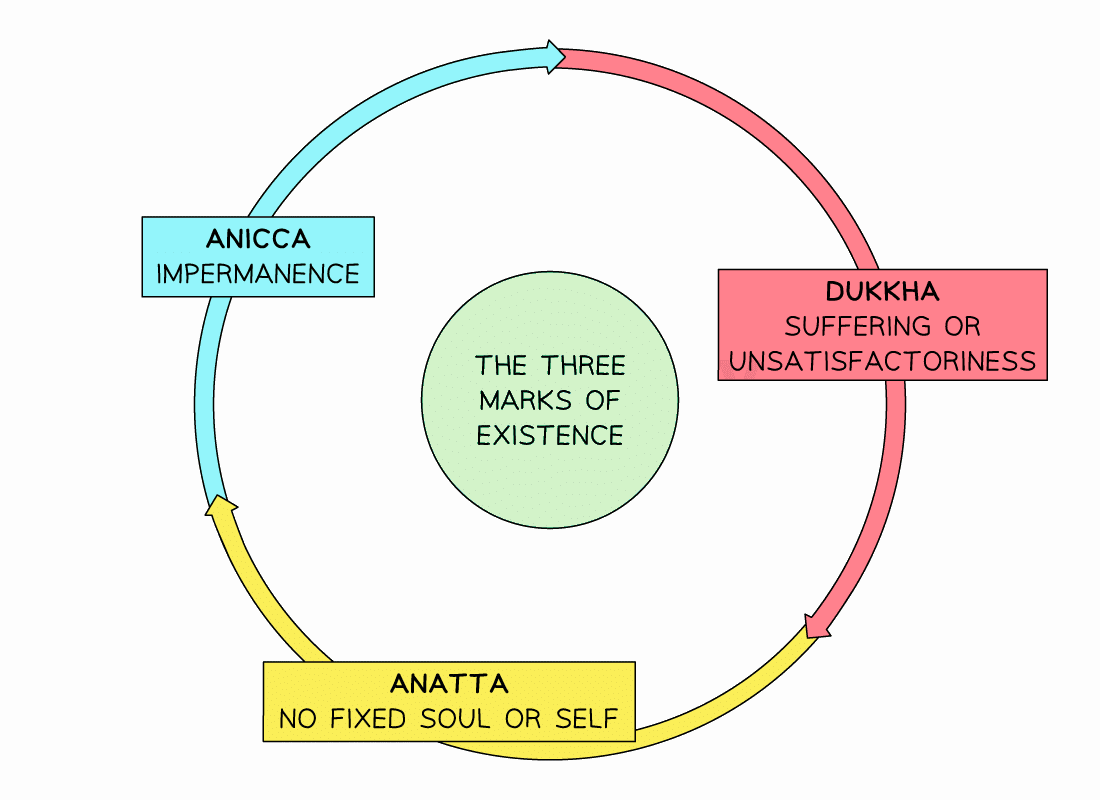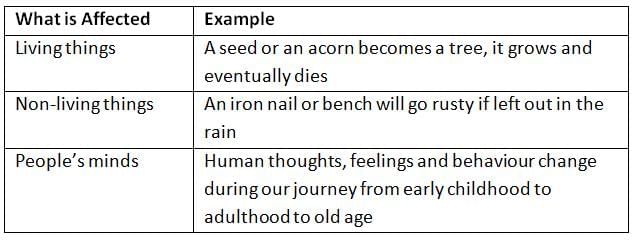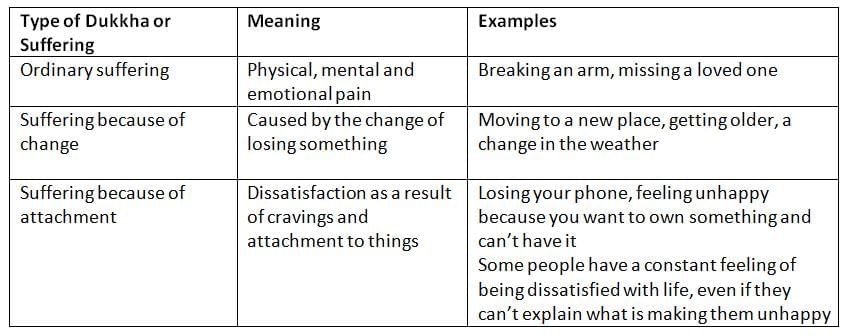Dhamma: The Three Marks of Existence | Religion, Philosophy & Ethics for GCSE/IGCSE - Year 11 PDF Download
What are the Three Marks of Existence?
In Buddhism, all things, whether animate or inanimate, are characterized by three fundamental qualities, often referred to as the Three Universal Truths. These are:
- Anicca – the concept of impermanence
- Anatta – the absence of a permanent self or soul
- Dukkha – the presence of suffering or dissatisfaction
The Three Marks of Existence

What is Anicca?
Anicca refers to the principle of impermanence, highlighting that everything is in a constant state of flux. According to Buddhist teachings, suffering (dukkha) emerges when people cling to things and resist their natural changes. Recognizing anicca encourages detachment, which in turn reduces suffering.
What Does Anicca Affect?
Anicca influences the world in three primary ways:
The Three Effects of Anicca

The Story of Kisa Gotami
- This traditional Buddhist tale illustrates how understanding anicca can help alleviate suffering by reducing attachment:
- Kisa Gotami was a woman devastated by the death of her child. Unable to accept the loss, she sought help from the Buddha. He instructed her to collect a mustard seed from every household in the village where no one had experienced the death of a loved one.
- Visiting house after house, she found that every family had suffered a loss.
- This realization helped Kisa Gotami see that her grief had blinded her to the universal nature of death. Accepting that death is inevitable, she let go of her attachment to her deceased child, buried them, and became a follower of the Buddha.
The Three Marks of Existence: No Fixed Self (Anatta)
What is Anatta?
Anatta is the Buddhist concept that there is no fixed or permanent self or soul. It suggests that a person’s identity is not static but is instead composed of five ever-changing components known as the five aggregates or skandhas. This teaching is particularly significant in Theravada Buddhism.
The Five Aggregates
Buddhists break down the self into five parts, or aggregates, to illustrate that there is no unchanging core to a person. Each component is in constant flux, meaning the “self” is always changing.
The Story of Nagasena and the Chariot
This story exemplifies the concept of anatta:
- Around 200 years after the Buddha’s time, a monk named Nagasena visited the court of a Greek king, Milinda. When the king asked the monk’s name, Nagasena replied that “Nagasena” was merely a label, not a reference to a fixed self.
- Confused, the king asked who was standing before him. Nagasena used the analogy of a chariot to explain: a chariot is composed of parts like wheels, an axle, and a yoke.
- The term “chariot” refers to these parts collectively. If disassembled, the chariot ceases to exist as such. Similarly, a person is merely a collection of parts, with no independent, permanent “self” apart from them.
The Analogy of the Chariot

The Three Marks of Existence: Suffering (Dukkha)
What is Dukkha?
Dukkha refers to suffering, dissatisfaction, or a sense of unease inherent in life. Buddhists believe that experiencing dukkha is an unavoidable part of existence.
The Three Types of Dukkha
The Buddha identified three distinct forms of dukkha:
The Buddha also taught that there are seven states of suffering:
- Some individuals experience a persistent sense of dissatisfaction with life, even if they cannot pinpoint the cause of their unease.
- The Buddha also taught that there are seven states of suffering, emphasizing the pervasive nature of dukkha in human experience.
The Seven States of Suffering

|
172 docs|3 tests
|
FAQs on Dhamma: The Three Marks of Existence - Religion, Philosophy & Ethics for GCSE/IGCSE - Year 11
| 1. What are the Three Marks of Existence in Buddhism? |  |
| 2. What is Anicca, and why is it important? |  |
| 3. How does Anicca affect our daily lives? |  |
| 4. What is the story of Kisa Gotami, and what does it illustrate about Anicca? |  |
| 5. How does the story of Nagasena and the chariot explain the concept of Anatta? |  |















